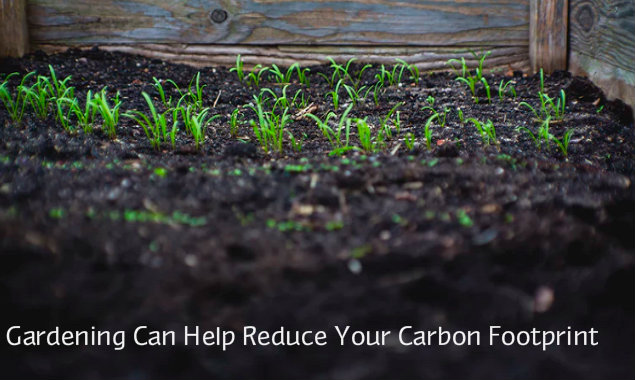For most people, gardening is more than just a hobby; it’s a passion. However, climate change is threatening the experience across the world. We are currently living in a time when humans are pumping huge amounts of carbon dioxide and various greenhouse gasses which are trapping heat into the atmosphere. There are many factors contributing to this such as burning natural gas, oil and coal in homes, factories, motor vehicles and power plants. Hence, it is imperative for us to find different ways through which we can reduce the use of fossil fuels. Its depletion is what’s causing the earth’s temperature to rise to an all-time high and disrupting the climate.

Some practices to reverse this and enable us to live sustainable lives can be started in our own backyards. Gardening, when done well, can help fight against climate change by reducing carbon emissions. It doesn’t matter if you are an expert or have just started gardening, there are numerous ways in which gardening can help decrease your carbon footprint, some of which are mentioned below.
Selecting low-emission garden practices and products
Garden tools which are typically powered by gasoline are generally major carbon emitters, which is the leading gas causing global warming. However, many unexpected sources could also be causing carbon emissions such as pesticides and fertilizers which are fossil fuel based or potting mixed which are peat-based. The best alternatives to these are using push or electric rakes, mowers and any other low-or-no emission tools, natural methods for pest control and using natural compost.
Planting shrubs and trees
Due to their long lifespan and their size, large shrubs and trees can remove carbon dioxide from the atmosphere. Trees, when placed well, also provide the added bonus of offering summer shade and protection from the harsh winter winds. Additionally, they can also help reduce carbon emission associated with air conditioning and home heating.
Not leaving the garden soil completely naked
Build, stabilize and add such nutrients to the garden soil which would otherwise remain bare. You can do this by planting numerous winter crops such as cereal grains, legumes and grasses. Along with keeping the weeds out and preventing soil erosion, they are also known to add carbon to the soil when they’re turned under during spring. Other legumes, such as clovers, beans and peas, have the ability to convert nitrogen present in the atmosphere to natural fertilizer.
Recycling your yard and food waste
Methane is generated from organic waste which decomposes in landfills which have a poor oxygen supply. Methane is 23 times more potent at trapping heat than carbon dioxide. However, when this waste is composted in the presence of oxygen, it can greatly reduce the production of methane. Composting can also help produce a soil rich in nutrients which reduces the necessity of synthetic fertilizers while helping the soil store much more carbon.
These were a few examples of things we can do to begin living a more environmentally friendly and sustainable life and incorporating the same in our gardens too. Through this, we can take our first steps towards helping reduce climate change, no matter how small.

